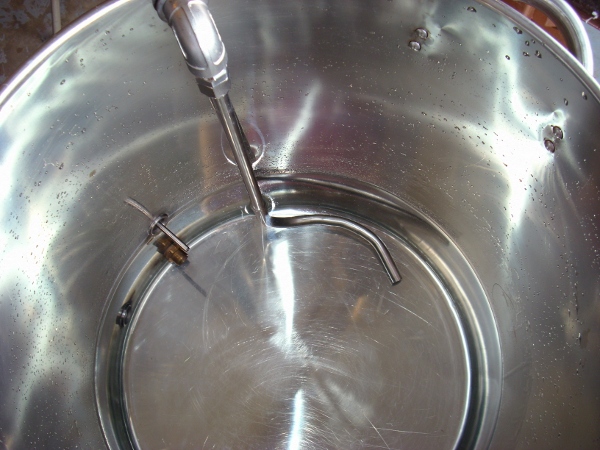I will be punching a hole in my brand new 15gal boil kettle (if it ever shows up...) with the intention of setting up a whirlpool during the cold break. I would like some input on my approach and see if maybe I am overlooking something obvious.
I was thinking about setting the return from the plate chiller higher than the high water mark causing the wort to splash a little. To force the whirlpool I was probably going to use a 90 fitting with a spare barbed hose connection I have laying around. I see two advantages to this: 1, the splashing will help aerate the wort a little and 2, pumping the cold wort on top should help with some of the temperature stratification. The risk, obviously, is i am risking contamination and maybe making a bit of a mess. To mitigate these issues, I was thinking of putting the lid on the boil kettle for the last couple of minutes of the boil to sanitize the air in the kettle. Do I have to worry about DMS (or whatever the right TLA is for the bad volitile aromatics) assuming a 60-90 minute boil? I would see this as safter than using forced oxygenation using a diffuser stone. I am dubious that a diffuser stone can be completely sanitized.
Would I be better having the fitting for the whirlpool installed in the bottom of the kettle?
I was thinking about setting the return from the plate chiller higher than the high water mark causing the wort to splash a little. To force the whirlpool I was probably going to use a 90 fitting with a spare barbed hose connection I have laying around. I see two advantages to this: 1, the splashing will help aerate the wort a little and 2, pumping the cold wort on top should help with some of the temperature stratification. The risk, obviously, is i am risking contamination and maybe making a bit of a mess. To mitigate these issues, I was thinking of putting the lid on the boil kettle for the last couple of minutes of the boil to sanitize the air in the kettle. Do I have to worry about DMS (or whatever the right TLA is for the bad volitile aromatics) assuming a 60-90 minute boil? I would see this as safter than using forced oxygenation using a diffuser stone. I am dubious that a diffuser stone can be completely sanitized.
Would I be better having the fitting for the whirlpool installed in the bottom of the kettle?




